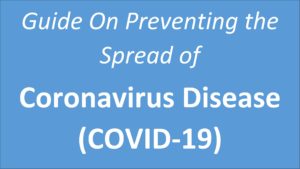Blood pressure is the force exerted by circulating blood against the walls of the body’s arteries, the major blood vessels in the body. Hypertension is when blood pressure is too high. The drugs which are used to treat hypertension are known as hypertension drugs.
Blood pressure is written as two numbers. The first (systolic) number represents the pressure in blood vessels when the heart contracts or beats. The second (diastolic) number represents the pressure in the vessels when the heart rests between beats.
WHO Key Facts on Hypertension
- Hypertension – or elevated blood pressure – is a serious medical condition that significantly increases the risks of heart, brain, kidney and other diseases.
- An estimated 1.13 billion people worldwide have hypertension, most (two-thirds) living in low- and middle-income countries.
- In 2015, 1 in 4 men and 1 in 5 women had hypertension.
- Fewer than 1 in 5 people with hypertension have the problem under control.
- Hypertension is a major cause of premature death worldwide.
Hypertension Drugs List
There are several classes of hypertension drugs. Each class lowers blood pressure in a different way.
1. DIURETICS
Diuretics increase urination which reduces sodium and fluid in the body. That can help lower blood pressure because it lowers blood volume. Mild hypertension can sometimes be treated using diuretics alone, although they are more commonly used in combination with other high blood pressure medications. Examples of diuretics include:
- Bumetanide (Bumex)
- Chlorthalidone (Hygroton)
- Chlorothiazide (Diuril)
- Ethacrynate (Edecrin)
- Furosemide (Lasix)
- Hydrochlorothiazide HCTZ (Esidrix, Hydrodiuril, Microzide)
- Indapamide (Lozol)
- Methyclothiazide (Enduron)
- Metolazone (Mykroz, Zaroxolyn)
- Torsemide (Demadex)
One side effect of diuretics is a loss of potassium, which carry out of the body in urine along with sodium. Potassium is essential for proper muscular movement and a deficiency of this mineral can result in fatigue, weakness, leg cramps, and even problems with the heart.
So often, patients on traditional diuretics advise to take their medication with a potassium-rich food, such as orange juice or a banana, or they will take a potassium supplement.
Some diuretics developed to address the issue of potassium loss. These blood pressure medications are known as “potassium-sparing” diuretics.
They include
- Amiloride (Midamor)
- Spironolactone (Aldactone)
- Triamterene (Dyrenium).
Finally, there are the combination diuretics, which include a potassium-sparing agent and a traditional diuretic. These include
- Amiloride hydrochloride and hydrochlorothiazide HCTZ (Moduretic)
- Spironolactone and HCTZ (Aldactazide)
- Triamterene and HCTZ (Dyazide, Maxzide).
2. BETA BLOCKERS
Beta-blockers lower blood pressure by acting directly on the heart. These high blood pressure medications reduce heart rate and force of pumping, as well as reduce blood volume. Beta-blockers includes
- Acebutolol (Sectral)
- Atenolol (Tenormin)
- Bisoprolol fumarate (Zebeta)
- Carvedilol (Coreg) — Combined alpha/beta-blocker
- Esmilol (Brevibloc)
- Labetalol (Trandate, Normodyne) — Combined alpha/beta-blocker
- Metoprolol tartrate (Lopressor) and metoprolol succinate (Toprol-XL)
- Nadolol (Corgard)
- Nebivolol (Bystolic)
- Penbutolol sulfate (Levatol)
- Propranolol (Inderal)
- Sotalol (Betapace)
- HCTZ and bisoprolol (Ziac) is a beta-blocker plus
3. ACE INHIBITORS
Angiotensin is a hormone in the body that causes blood vessels to narrow. The angiotensin-converting enzyme (ACE) inhibitors decrease the production of angiotensin and, in turn, that helps lower blood pressure. Examples of ACE inhibitors include:
- Benazepril hydrochloride (Lotensin)
- Captopril (Capoten)
- Enalapril Maleate (Vasotec)
- Fosinopril sodium (Monopril)
- Lisinopril (Prinivil, Zestril)
- Moexipril (Univasc)
- Perindopril (Aceon)
- Quinapril hydrochloride (Accupril)
- Ramipril (Altace)
- Trandolapril (Mavik)
4. ANGIOTENSIN II RECEPTOR BLOCKERS
The hormone angiotensin narrows blood vessels, but to do its job it needs a place to bind. That’s where angiotensin II receptor blockers come in. They prevent angiotensin from binding to receptors on the blood vessels and that helps lower blood pressure. Angiotensin II receptor blockers include:
- Azilsartan (Edarbi)
- Candesartan (Atacand)
- Eprosartan mesylate (Teveten)
- Irbesartan (Avapro)
- Losartan Potassium (Cozaar)
- Olmesartan (Benicar)
- Telmisartan (Micardis)
- Valsartan (Diovan)
5. CALCIUM CHANNEL BLOCKERS
Calcium increases the strength and force of contractions in the heart and blood vessels. Blocking its entry into smooth muscle tissue reduces this effect. Calcium channel blockers lower blood pressure by relaxing blood vessels and reducing heart rate. Examples of calcium channel blockers include:
- Amlodipine besylate (Norvasc, Lotrel)
- Clevidipine (Cleviprex)
- Diltiazem hydrochloride (Cardizem CD, Cardizem SR, Dilacor XR, Tiazac)
- Felodipine (Plendil)
- Isradipine (DynaCirc, DynaCirc CR)
- Nicardipine (Cardene SR)
- Nifedipine (Adalat CC, Procardia XL)
- Nimodipine (Nimotop, Nymalize)
- Nisoldipine (Sular)
- Verapamil hydrochloride (Calan SR, Isoptin SR, Verelan, Covera HS)
6. ALPHA BLOCKERS
Alpha-blockers cause blood vessels to dilate, thereby lowering blood pressure. These medications are also used to treat prostate enlargement in men.
Alpha-blockers include
- Doxazosin mesylate (Cardura)
- Prazosin hydrochloride (Minipress)
- Terazosin hydrochloride (Hytrin)
7. ALPHA-2 RECEPTOR AGONIST
Methyldopa, formerly known under the brand name Aldomet, is one of the oldest blood pressure medications still in use. It was first introduced more than 50 years ago. Methyldopa works in the central nervous system to lower blood pressure. While its general use has declined over the years, methyldopa is considered the first-line of treatment for high blood pressure that develops during pregnancy.
8. CENTRAL AGONISTS
Some hypertension medications work in the central nervous system rather than directly on the cardiovascular system. Central agonists thus have a tendency to cause drowsiness.
Drugs in this class include
- Clonidine hydrochloride (Catapres) and
- Guanfacine hydrochloride (Tenex).
9. PERIPHERAL ADRENERGIC INHIBITORS
There was a time when the high blood pressure medication list was very short indeed. In the 1950s, reserpine was one of the few products on the market to treat hypertension. It rarely uses due to its numerous side effects and drug interactions.
The peripheral adrenergic inhibitors work in the brain to block signals that tell blood vessels to constrict. They are mostly used when other high blood pressure medications fail to solve the problem. Guanadrel (Hylorel), guanethidine monosulfate (Ismelin), and reserpine (Serpasil) are peripheral adrenergic inhibitors.
10. VASODILATORS
Vasodilators relax artery wall muscles, and that causes blood pressure to drop. These drugs usually not use alone — and, in the case of
- Minoxidil (Loniten) — used only in severe hypertension.
- Hydralazine (Apresoline)
- Minoxidil (Loniten) are vasodilators.


